|
Welcome to 2024. Last year was difficult for many people for a host of reasons. The world of animal welfare seems to have been turned upside down. This shift began in 2020, but 2023 seems to have been the worst year yet for people who advocate to help animals and people who need help. I personally attribute a lot of this to the pandemic not just because life became harder for many people but because some self-proclaimed leaders in the animal welfare movement seemed to have lost sight of what we all seek - saving the lives of more companion animals and making the world a better place for those animals. Ideas that probably should have been just tossed around after sharing too much alcohol and then discarded as absurd suddenly became operating models for organizations that have a lot of money, influence and power. Those organizations encouraged or provided political cover for animal shelters to:
All of that is the bad news. The good news is that you can make a difference by changing your perspective, something I have had to do myself. How? For me, the key is to focus not on the global issues, issues in a single country or state or issues related to national organizations run amok over which we have no influence, but by trying to make things a little bit better right in our own backyards. I can't use the phrase Dorothy shared in a famous movie because it is subject to copyright, but you get the idea. Focus on the area you consider home. Adopt from a local shelter if you can. Adopting an animal is a 10 to 15 year commitment not to be taken lightly and I know people can only adopt as many animals as they can care for. Please just consider a shelter animal from your community or your region the next time you plan to bring a new animal into your life. Most either were someone's beloved companion and all have the capacity to be just that.
Foster a local animal if you can. Fostering is just as important as adopting. Animals rarely behave in a shelter the way they behave in a home. Fostering an animal from your community allows the shelter or rescue group learn more about the animal's true personality to place that animal faster. For people worried about getting too attached, my hope is you would see your home as a stepping stone to the animal's new future. A step made possible through your generosity. Many rescues are foster-based and the number of animals helped are limited more by the lack of foster homes than by money. Cross-post to be exposure for shelter or rescue animals. I can't count the number of times I have seen people in the shelter and rescue community be critical of people who share about animals in need on social media platforms. They act as if your time is of no value unless you adopt, foster or volunteer. Placing animals is about marketing and the ability to place animals needing homes if limited by the number of people who know about a particular animal. It can sometimes take thousands of shares and comments to get an animal placed. Cross-posting is an important part of that. If someone faults you for now doing more, just laugh. You are helping in your own way. Volunteer locally to help shelter or rescue animals. Even if you can't adopt or foster, most shelters and rescues rely heavily on volunteers. Tasks can relate directly to helping animals like walking dogs, playing with dogs or cats, reading to dogs or cats or transporting dogs or cats to a rescue group or veterinary appointment. You can also help indirectly by helping to market animals, helping admin a social media page, collecting supplies or doing laundry. I spend a lot of time making flyers, doing small fundraisers and making videos in which animals appear to talk or set to music. Speak out to seek better for animals in your community. Most tax-funded animal shelters end the lives of healthy and treatable animals. People are paying for that. If you want better of the elected officials who are stewards of tax-dollars, tell them that. If you learn of neglect or cruelty at your local animal shelter, speak out and demand better. Only when enough people make it obvious to elected officials that issues related to companion animals are important will they listen and either modify their own behavior or be voted out of office. Donate locally to help animals. I know many people who donate to large national groups that claim to advocate for animal welfare while either doing exactly the opposite or while using donations to pay elaborate salaries or administrative costs. I call them the alphabet soup imposters because most are best known by their initials and all are self-perpetuating money making operations. Please don't give them your hard earned money. If you want to donate to help animals, do some research to find an organization in your area where your dollars will do the most good. Donations to municipalities are tax deductible - consider donating to your local animal shelter to cover the adoption fee for a shelter animal to get him or her placed faster or to help pay for extraordinary veterinary care. Also consider donating to help a rescue group in your area. Rescues rely entirely on the goodwill of the public to be able to pay for veterinary care for the animals they help. Animal rescues - please look in your own backyard first. Not a day goes by when I don't learn of someone in animal rescue who has decided to walk away from helping animals completely or who is so angry with the public that it is affecting their physical, mental and emotional healthy. I encourage anyone running a rescue group, regardless of size, to consider what they hope to accomplish using the resources they have. You cannot help 1) all the animals on the planet; or 2) all the animals in north America; or 3) all the animals in the United States; or 4) all the animals in your state. It is my hope that you will look to your own area first when it comes to helping animals in need. Almost every community has animals at risk of having their lives ended at local animal shelters not because there is anything "wrong" with them, but because the way most shelters are managed. Please look to your local shelter first before reacting to all of the social media content about all the animals who need to be placed. That is just too overwhelming and it is up to people in each community to advocate for change in their own areas. Do what you can, knowing it is enough. It is easy to get overwhelmed trying to help animals in need. Something comes across a news feed or someone tags us in a post and we want to do all we can to help. It can be too much on some days for me and I know it is the same for others. When you feel like you just can't take anymore, walk away. Take care of yourself first. There will still be animals in need when you are in a better place and are better prepared to develop a plan for how you can help, if you even can. You alone cannot save all the animals in your community and it in the end, that is not your responsibility. Every small thing you do matters and you will likely never know how the most simple of actions sets other actions in motion. Welcome to 2024. We can all do something to make it better.
2 Comments
There are defining periods for all of us which direct the paths we take through life. Deaths of people we love. A lost job which leads to an unexpected career change. Discovery of some new information which changes our world view. Once we reach these crossroads of sorts, there is no going back. Just choosing a way forward. Such was the case for me when I learned about the deaths of animals in our tax-funded animal shelters using our money, in our name and while we are blamed for the process. An author friend of mine, Cara Sue Achterberg, had a defining period in her life recently which is the subject of her new book - One Hundred Dogs and Counting: One Woman, Ten Thousand Miles and a Journey into the Heart of Shelters and Rescues. I first met Cara when I blogged about her previous book - Another Good Dog: One Family and Fifty Foster Dogs. I truly enjoyed her delightful book which introduces us to the world of fostering dogs and to her family, all of whom participate in the process. Cara wrote about what motivated her to foster for a rescue group called Operation Paws for Homes, about her “puppy addiction,” and about all the dogs who passed through her home on their way to new lives. Having fostered so many dogs, Cara was compelled to ask an obvious question – “where are all these dogs coming from any way?” It is a question I wish more people in rescue circles asked of “the system” related to their efforts to save the lives of animals. We are hearing more and more that fostering is the future of animal sheltering and welfare and I believe that’s true. The more animals we have in foster homes, the faster we can place those animals into new homes and the fewer animals we have in shelters which are stressful places for even the most well -behaved companions. But as I wrote about in my book, if we ever hope to get a handle on the number of animals entering our tax-funded shelters, many of whom are summarily destroyed, we have to look at the bigger picture and address the first of many questions which was the one Cara asked - where are all these animals coming from? Cara had finished Another Good Dog and hit the road to tour the book and to see some of the places the dogs came from. She wanted to see them for herself and take a closer look at why there was so much need for fostering. As Cara wrote: Money was good. But money alone would not solve the problem of killing dogs because there wasn’t enough space/time to save them. Foster homes could make a difference. If we had more foster homes, we could save more dogs. The message of my book—that fostering is one way anyone can help save dogs—was needed now more than ever. If there were more foster homes, it would lessen the stress on shelters to stretch strained budgets and maybe they wouldn’t be forced to make decisions about which dogs they could afford to save and which would have to die. But how could there ever be enough foster homes? Foster homes wouldn’t stem the tide of dogs arriving at the shelter. Fostering could give them breathing room, but, clearly, it wasn’t the only answer. I needed to do more than write a book. I needed to go down there. I needed to see this for myself. Sitting there with Willow, I began to hatch a plan. I would use my book advance money, not just to tour with my book, but to rent a van, fill it with donated food and meds and supplies, and take them to the shelters. Along the way, I would write about it, using my words to shine a light on the situation. Cara ultimately took four separate trips to shelters and rescue groups in North Carolina, South Carolina, Virginia, Tennessee and Alabama, logging over ten thousand miles in the process. I was fortunate enough to meet her in person as she traveled through Alabama. It was after the third of these trips, and after having fostered a particularly difficult dog named “Gala,” that she decided to write a new book. Cara explained the process this way: I wrote a proposal for a new book. One that would pick up where Another Good Dog left off with our foster family, but it wouldn’t stop there. I would take my readers to the shelters. So often when I talked about what I saw in the southern shelters people shook their heads, and I was never sure if it was because they didn’t believe me or they didn’t want to believe me. But in my book, I could take them there. I could show them. . . I felt an urgency. The faces of so many dogs click through my mind. Lying on concrete floors or hard plastic shelves, with so little human contact, their eyes haunted me. They were confused and frightened and so incredibly vulnerable. I didn’t have a minute to waste. When Cara told me she planned another book, I jumped at the opportunity to read an advance copy and give others a sneak peek into the content. As was my method in my blog about Another Good Dog, I won’t share too many details about the new book here. My hope is that you will read it and take the same journey with Cara as I took while reading the book. I will share that what Cara learned during her travels over so very many miles was infuriating, heart breaking, exasperating, empowering, compelling and hopeful all at the same time. Some shelters she visited were little more than disposal facilities, where government officials should have ensured proper care for animals, but were satisfied with housing them in substandard conditions only to kill them. Of one such place, Cara wrote: There were no dogcatchers or kennel attendants, just four dogs in kennels that were piled with feces, flooded with urine, and swarming with flies. There were no beds or doghouses or even a blanket to lie on, so the dogs had no choice but to lay in their own filth. They barked at the sight of us, jumping against the fence excitedly. One small, brown pit bull was emaciated and crusted with poop, but wiggled and wagged, eager for our attention. A few kennels down were two dogs together in one kennel with twice as much filth. One had a belly likely bloated with worms; the other Trisha was pretty sure was a sibling of a dog back at her house she had rescued a few weeks before. Around the other side of the building, we found a sweet, yellow dog with doe eyes and a nylon collar, also frighteningly thin, who had a soft cough. The volunteer shrugged, “they’ll stay here until the guys get tired of taking care of them. Then they’ll take them to the vet to be killed.” (Fanny, in the Huntington Pound; photo by Ian Achterberg) In other places, local government officials were so complacent about sheltering animals that private individuals had stepped in to try to fill the gap, using their own time, money and resources in a desperate attempt to keep animals alive. Some of those people had taken on so many animals with no plan in place to re-home them that the situation bordered on hoarding. They felt they were the only people keeping animals alive and sometimes made poor choices as a result of huge hearts who just wanted to save lives. Cara wrote about two sisters she met who are in their sixties yet who care for seventy dogs and one hundred and forty-five cats at their property in a county that has no real shelter, just a small dog pound. “The sisters began doing what the county should have been doing, paying for it out of their own pocket and now with their social security.” I’m sure this happens more often than people realize; they have no clue that people will big hearts work frantically to save lives while elected officials do nothing to help using tax dollars. But all was not doom and gloom. As Cara wrote, “saving dogs, like pretty much everything in this world, comes down to business. What we need is a better business plan. Too many dogs are dying for want of it.” Her travels took her to positive places where “attitudes are a powerful force.” These were welcoming places, some of which operated with very little money. They were staffed by positive people who made the shelter operation welcoming and with leadership who kept the public informed so issues could be solved by the public and the shelter working together. At one place Cara visited, the shelter director focused not on what she didn’t have —volunteers, money, community support, or a fancy building—and instead looked at what she did have—plenty of land in a beautiful part of the country. The director created walking trails through their woods and began a rock painting program. The staff and volunteers began painting rocks with positive messages and placing them on the trails. “Then they invited the public to come and hike, paint a rock and place it, or find a rock and take it home. She enlisted the local high-school students to create storyboards and post them along the trails, giving young families even more incentive to come to the shelter. The only price for using their beautiful, interactive trails? Walking an adorable, adoptable shelter dog! Talk about a win-win. I loved it and was fast becoming a member of the Kristin Reid fan club. Kristin’s common-sense solutions and systems were obvious everywhere we looked.” (Cara visiting with Rhonda Lindsay of Brindlee Mountain Animal Rescue in Alabama; photo by Nancy Slattery) As a No Kill advocate, I was enthralled by what Cara learned during her travels. Much of what she saw validates what advocates in No Kill circles have said for years: that saving the lives of animals is a choice and that it is not about money. It’s about compassion and leadership. It is easy to think that animals die because the public doesn’t care enough. In Cara’s words – “It can’t be that people don’t care, they simply don’t know.” So very true. And thanks to Cara’s new book, more people will know and then they can act to be part of the solution. Cara won’t be able to tour her new book this year due to the pandemic, so we agreed to do a Q&A by video so you can meet her and hear her responses to some questions I posed. I hope you enjoy our chat and that you will read her book. It’s available for pre-order now from a variety of sources and will be available at local bookstores on July 7, 2020. Cara has written a host of other books and has a new fiction book due out in 2021. You can keep up with the latest news on her website and by following her blogs. How many dogs Cara she fostered to date? 177. Simply amazing! I published a blog on Wednesday of this week about our COVID 19 public crisis and what animal shelters can do to reduce intake of animals into shelters and increase output of animals from shelters. The impetus for the blog was a call I had with a contact of mine who asked what I knew about rumors that some shelters were resorting to population control killing. I used the blog to again promote the programs and services of the No Kill Equation while highlighting some great things being done by shelters to help animals. Today let's talk about the rest of us. About those of us who share our lives with companion animals. The choices we make regarding our pets which are reflected in our personal behavior are more important now than ever before when it comes to keeping animals alive - not just our own animals, but the animals in our communities. I realize that many people don't give a whole lot of thought to how their personal choices affect how animal shelters operate. What we do as individuals absolutely affects shelters either for good or for bad. Keep Your Dogs Contained Most places have laws that require animals, particularly dogs, be contained so they do not run at large. Now is the time to take extraordinary measures to keep your pets under your control. Do not let your dogs run loose like it is 1845. It is not only dangerous for your dog, but it can be dangerous for the people who encounter your dog whether they are driving or just happen to cross paths. Make sure you keep gates closed, keep doors closed and you teach your children to do the same. If your dog gets loose, he or she is not only apt to be injured, but is apt to end up in a local animal control system. Do your part to keep that from happening not only to reduce the number of dogs in local shelters, but to avoid putting the life of your dog at risk. Your dog who is well behaved at home may do very poorly in a shelter environment and that may lead to his or her death. Make Sure Your Pets Can be Identified Now is the time to have your pet microchipped so he or she can be identified. Chipping is a cheap, easy way to help shelters, veterinary offices and law enforcement authorities know your pet's identity to get them back to you quickly if they do get loose or even if they are stolen. If you are on a Stay at Home Order and cannot get to a veterinary office, you can order an identification tag or collar for your pet so that someone who finds them can contact you easily. For cats, breakaway collars are recommended to avoid strangulation. Identify a Pet Parent I have written about the concept of a Pet Parent before. Much like some people name a Godparent for a child, a Pet Parent is someone who has agreed to take your pet or pets for you in the event of your death, hospitalization or if you can no longer care for them for some reason. Please do not assume that your family members or friends will automatically take your pets and care for them as you do in the event the unthinkable happens. Have an actual conversation with a family member or friend to ensure not only that they commit to take your pets, but that they know how to get to them in your absence and how to care for them. Our Pet Parent is one of my cousins. She has information about pet history, veterinary contacts, local contacts to get into our home and we have made provisions for the costs of care in the event of our deaths. No one likes to think of the worst case scenario, but it is the responsible thing to do. Related to COVID 19, you also need a Pet Parent for short-term housing and care. Think of this as a foster for your pet who will care for your pet temporarily until you have recovered and can care for your pet yourself. Don't allow your pet to end up in your local animal shelter because you didn't have a plan in place. Pet Supplies - Be Ready In the middle of shopping for the human members of your family by having a supply of food to last for a while, don't forget your pets. Make sure you have enough pet food to last a while. Make sure you have your pet's medications refilled and documented with dosages and administering directions. Have a crate and extra supplies on hand if you need to relocate your pets quickly. Keep all animal vaccines up to date and have copies of those records available in the event that boarding becomes necessary. Help Local Animal Shelters There are a host of ways you can help your local animal shelter during this crisis provided you are not under a Shelter at Home Order. You can foster an animal to get him or her out of the shelter and help expedite the adoption process. Many shelters offer sleepover fosters, weekend fosters, or other short-term fosters which not only frees up shelter space, but also helps the shelter to learn about the true personality of the animal. Very few dogs and cats behave in shelters the same way they behave in a home environment. When you foster, you learn about the ability of the animal to ride in a vehicle, get along with other animals, get along with children and about their personalities in general. That information, along with photos and video clips can be used by the shelter to help place the animal in a new home. It's much easier to "market" animals to new homes when more is known about who they really are, beyond what we see. Now is also a wonderful time to adopt a shelter animal. Adopting a new-to-you pet now gives you a wonderful opportunity to help your adopted shelter animal decompress, learn about structure and become a member of your family. It can be hard to do that when working your normal hours at an office. Extra time at home makes the process easier for you and for your new pet.
You can also donate to your local animal shelter to help during the crisis. Some shelters may need food, blankets, beds, or enrichment items like Kongs and treats to keep shelter animals occupied during their shelter stay. Contact your local animal shelter to find out what they may need; many shelter have Facebook pages where they regularly list items they need donated. Donate to a Local Pet Food Bank Even if you have plenty of pet food on hand, others may not. If there is an organization in your community which operates a pet food bank, please consider donating so you can help another person keep their pet during difficult financial times. Many people are losing their jobs and may think they have to surrender their pet to a shelter because they can no longer afford to feed him or her. Many pet food banks taken open bags or boxes of food. No donation amount is too small. If you are not sure if your community has a pet food bank, your local animal shelter or local rescue groups should be able to tell you about places to donate food. It is obvious that our nation is in a state of crisis. The news of the COVID 19 pandemic is all around us. We’re all doing our best to get through this period together while changing our personal behavior to reduce the loss of life. The situation is evolving so rapidly that it’s enough to cause all of us to feel ill to some degree as we try to keep up. Stress levels are high. The pandemic affects every aspect of our daily lives and those effects extend to places we might not have expected. I got an email from an author contact of mine this morning, Cara Sue Achterberg, wondering what we can to about reports we are hearing that some animal shelters plan to destroy their entire populations of animals in anticipation that they will not be able to manage the intake of animals. I’ve seen posts on social media to the same effect. I’m honestly not sure how pervasive this “mass killing” problem really is on a national level. I've also read about people surrendering pets to shelters because they fear they can get COVID 19 from an animal. The information from the CDC about that rumor is here. Yes, this is a time of crisis. That’s the bad news. But there’s good news. Now is the perfect time to makes changes in the culture in our animal shelters and our communities to keep animals alive. We know how to reduce shelter intake. We know how to increase shelter output. The methods have been know for years. We do those things using the programs and services of the No Kill Equation which was developed by Nathan Winograd and about which I have written many times. Foster Programs Foster programs get animals out of shelters quickly. Many people are working from home. This is a great time for people to foster a shelter pet not only to free up shelter space, but to help the animal get adopted faster. Most animals behave completely differently in a home than they do inside a shelter, so fostering provides a great opportunity to learn more about them and to help them decompress. Photographs, video clips and information about the animals are then used for marketing purposes. I saw a Facebook post just this morning about the Kern County Animal Shelter which is doing drive-up foster pick up of animals to free up shelter space. (image courtesy of the Kern County Animal Services) Adoption Programs Promoting adoption of animals is always important, but now it is critically important. Shelters can use the media and social media to let the public know how to adopt an animal and what animals are available using adoption specials and promotions. In a time of crisis like this, shelters do well to either waive adoption fees (while still doing screening) or drastically reduce those fees. Many shelters have used this opportunity to reach the public about adoptions using humor. These images are from Huntsville Animal Services in Alabama, which is my local tax-funded shelter; they were taken by Kelly Jo (an incredibly talented Lead Kennel Attendant) and posted on the shelter's Facebook page. Just like now is a great time to foster a pet, now is a great time to adopt a pet. With so many people working from home, it provides a wonderful opportunity to help animals decompress from their shelter stay and get settled into a new home. (images courtesy of Kelly Jo) Pet Retention Programs Managed intake is more important now than ever. Most shelters are not obligated to take owned animals and they should not be taking them now. Shelters should be doing all they can to encourage pet retention to keep pets in existing homes or help people rehome pets themselves with family members, friends, co-workers of people they attend church with, know from social groups, etc. Now is a great time for shelters to share information about pet food banks or even partner with local rescue groups to provide free pet food to people who may have lost a job or otherwise be facing a financial crisis. Shelters can also share information about local veterinary resources (to resolve health conditions which may be causing undesirable pet behavior) and about local trainers and behaviorists (to resolve issues with pet behavior which may be the reason someone wants to surrender their pet to an animal shelter). In many cases, a desperate pet owner can be referred to a local rescue group for help. If an owner still insists they must surrender their pet, they should be put on a waiting list to do that once space becomes available. Community Involvement/Public Relations Shelters that work hard to keep their communities informed will always operate more efficiently, but now is the time to really ramp up public relations to get the animal-loving community involved. Use of the media - both television and radio - and social media is the bridge to connect shelters to the public which affects the number of animals entering shelters and the number of animals leaving shelters. Although many shelters assume the public is aware of the need to make better decisions and to adopt, foster, volunteer, etc. most people just don’t think about their local animal shelter unless it is put on their “personal radar” for some reason. If a shelter needs help from the community, it has to say so loudly, clearly and often. Tell people to take extraordinary steps to keep pets contained so they don’t end up in the shelter. Tell people what to do if their pet does go missing. Tell people about how the process works to foster and adopt animals. Tell people about the animals in the shelter who need to be fostered or adopted using images, video clips and information. An engaged public is a active public which can do amazing things in times of need, it only we tell people how they can help. The programs I covered above are just some of the programs of the No Kill Equation. Now is the time to get progressive. Now is the time to make better choices to keep animals alive with the help of the community. I hope that the rumors I’ve heard of shelters essentially “cleaning house” of both animals and bacteria are false. As I told Cara this morning, I think shelters will go one of two ways. Shelters led by progressive people or people who genuinely care will rise to the challenge. They will get creative and do everything possible to help their communities and keep animals alive. Regressive shelters led by people who remain willfully ignorant of progressive programs will likely use the crisis as an excuse to kill animals while making it sound like they are performing some Orwellian public service. What will your animal shelter do? Will it rise to the occasion or will it make excuses? No matter what happens at your local shelter in the weeks and months to come, remember that you are paying for it. These links are not directly related to this blog, but may be helpful for you regarding pets and COVID 19. General Links Animals and Coronavirus Disease 2019 COVID 19 and Animals FAQs from the CDC COVID 19 FAQs from the American Veterinary Medical Association How to Care for Dogs and Cats during Coronavirus I’m a sucker for a good animal book. I have a library of go-to book resources, some of which are tabbed, highlighted and worn much like old high school or college textbooks (for those of you old enough to have used actual books in school). These are the more serious books I use as reference materials and to which I refer regularly in my animal welfare advocacy. Then there are what I call the feel-good books. I don’t mean feel-good in a Hollywood kind of way where nothing bad ever happens and the good guys always win. I mean feel-good from an animal welfare advocacy standpoint. These are books which share empowering and inspirational stories of people in the weeds of animal welfare, doing unseen great deeds for which all of us should be grateful. They are the books which have the power to compel each of us to evaluate what we are doing to help animals and to "be the change" we seek by getting personally involved in helping animals. A few weeks back, one of my reference authors (Kim Kavin of “The Dog Merchants”) led me to a new author about whom I did not know before. There had been an issue with difficulty getting a shelter in South Carolina to release a dog to a rescue group following Hurricane Michael and I was asked what I knew about the shelter operation. As it turns out, the shelter has nothing to write home about, as mom used to say. (The live release rate at the shelter is around 60% which means that animals have about a 50/50 chance of making it out of the shelter alive). Cara Sue Achterberg, however, does have something to write home about and she did just that in her enchanting new book about her experiences as an animal foster - “Another Good Dog.” I have written before about people who foster animals for animal shelters and rescue groups. I thought it was a big deal when I learned that my brother and sister-in-law had fostered more than 100 dogs in a period of over 8 years. Each time I've visited my brother’s house I've been amazed at how difficult it must be, and how much time it must take, to foster 5 or 6 dogs at any given time in addition to caring for and loving your own pets. Cara takes the concept of fostering to a whole new level, having fostered more than 50 dogs in a 2-year period and then writing a book about her experiences. No one is keeping score, of course, but the sheer number of animals flowing from shelters, to rescue groups, to Cara’s home and then on to new lives is just mind boggling to me. This is a very organized process in terms of the logistics of the rescue group getting dogs out of shelters and transporting them to foster homes, but the outcome is anything but certain. Foster families who take in rescue animals never really know what will happen when a new animal enters their home and never know how long their visitor will stay. It is a fascinating process to me which I think far too few people know about. Fostering animals for shelters and rescue groups quite literally keeps them alive. While many communities have become more progressive regarding how tax-funded animal shelters operate, healthy and treatable animals are still destroyed in our nation’s shelters for no good reason than the fact that they are in the wrong place at the wrong time. It is easy to tell ourselves that dogs are destroyed by the millions in our nation’s shelters either because something is wrong with them or because there is no other way to function. The truth is that with very few exceptions, all the healthy and treatable dogs in our shelters are good dogs and they just need our help to start new lives. Animals rarely behave like themselves in shelter environments which can be scary, loud, foreign places which are nothing at all like the homes and lives they once knew. Animals placed in foster homes are being prepared to become someone’s beloved companion through socialization and structure. When they are in foster homes, we help them decompress, help them get the veterinary care they need and we learn about their personalities so that we can help people learn more about who they truly are and not just how they behaved in the shelter. But on to Cara’s wonderful book. I grew up in a reading household and have always found great enjoyment in books in general. When I learn of a new animal book like Cara’s, there really is no better place to be than inside my head as I go along for the ride and learn about the life of another person. Lots of people write animal welfare or animal-oriented books. It takes a true talent to take us on a journey in a book and that is exactly what Cara has done in “Another Good Dog.” The book is not just about the dogs themselves; it is about Cara as a person, about what led her to feel compelled to foster dogs, about how fostering became a family affair (which includes her husband and children) and about how fostering has since become a way of life. I laughed. I cried. I wished Cara had kept some of the dogs she fostered even thought I understand why she did not. I found myself personally invested in the story and while Cara and I have never met, I am honored to call her both a friend and a hero. When I write blogs about books like Cara’s, I don’t want to spoil the journey for anyone. When you read her book you'll see for yourself what I saw as I turned the pages and wondered what in the world was going to happen next. The book will appeal to anyone who loves animals even if they have never fostered animals. If you have been thinking about fostering animals to save lives, this book may help you take a leap of faith and give it a try. Cara explains why it is that the heartbreak of letting a foster animal go to a new home is far outweighed by the need for fosters to keep animals alive. She helps us understand that no one is really ready to foster and you just do it and do your best, knowing that alive and cared for always beats the alternative (which in many parts of the country means death). She helps us understand that while fostering helps animals in need by preparing them to be someone’s beloved pet, each animal we help also helps to mold and shape us and to become better people in the process. One of my favorite passages from the book is this: In the beginning, fostering for us was about having fun with a new dog, trying each one out as if it could be our own. Each adoption was a decision for me – should we keep this one? And each time when the decision was made to let the dog leave, I felt sad, guilty event. Somewhere along the line, though, I’d stopped thinking of the dogs as mine. It didn’t hurt less, but it was easier. I didn’t imagine any of them staying. I had an important job here. It was to prepare the dogs for their new home. If I did my job right and OPH’s (Operation Paws for Homes) adoption coordinator team did their job right, there was a very good chance that the next home these dogs moved to would be their last. So when each dog left it wasn’t because I decided not to keep it, it was because I’d helped it find its home, and now could save another dog. Cara was gracious enough to agree to a Q&A session so I could share some information with my followers which is not contained in the book and help people learn more about her and what she does. If you have other questions for Cara about her book, you can contact her through her website. Q: Early on in your book, you talk about a foster kit you get which includes a number of items which I found fascinating: vitamins, probiotics, coconut oil and cranberry extract. Do you still use the same items for your fosters? If so, would you recommend them to anyone who adopts a dog from an animal shelter? A: Because so many shelter dogs have a spotty health history at best, we try to bolster their immune system and help them fight off potential health issues with vitamins and probiotics. The cranberry extract is given to female dogs to try to prevent (or treat) urinary tract infections that can be common in dogs who have to hold their pee for a long time on transport runs that can be as long as twelve or more hours. The coconut oil is not only a natural wormer, it’s good for lots of things like their coat. And yup, we still use the same stuff and I always recommend the probiotics to adopters. Q: We hear all the time about shelters with high kill rates which make it incredibly difficult for rescue groups to pull animals. Even though there are rescues out there that are willing to pull dogs that are heart worm positive, may have some behavioral issues, are older or may have come from a really bad situation, it seems like some regressive shelters would rather destroy the dogs than release them to rescues. Have you ever encountered this attitude? A: I do think it’s rare. I haven’t encountered it with the shelters we have established partnerships with, but this past fall I did run into it for the first time with a shelter in South Carolina that took in evacuated hurricane dogs. They put up quite a fight, insisting that we shouldn’t pull a dog because they had labeled him heart worm positive and dog-aggressive. Because I’d met the dog in person while on my tour, I argued that we should still pull him and offered to foster him myself. As it turns out, he was heart worm negative and not the least bit aggressive toward dogs, people, or even cats! Quite the opposite actually. I think the vast majority of shelters are working hard to save every dog they can, but as I learned this fall, occasionally there are shelter workers who become jaded or frustrated or maybe just burnt out, and find it easier to euthanize than go the great lengths it sometimes takes to save a dog. Q: A lot of people don't foster animals because they work full time away from home and are worried about leaving a foster animal alone for long periods of time. What would you say to those people to convince them that fostering is still a good idea? A: Even though I work from home, I still crate my foster dogs for part of the day. I do this because I know that the vast majority of adopters will have to crate them while they work. Most of the people who foster with OPH (the rescue I work with) work full-time away from their house. People who work outside of their homes are actually the perfect people to foster most dogs. Q: What do you think about the concept of Sleepover fostering where people foster either for a weekend or for a couple of nights? A: I think that any time you can get an animal out of the shelter for any period of time, it’s going to benefit that animal. It’s also a great way to ‘try out’ fostering a dog you aren’t sure about and to help shelter workers assess a dog’s temperament in a home setting. Q: In your book you talk about the fact that you may have a puppy addiction. Do you still? A: Oh, yes. Puppies are my crack. Even worse, I love to foster pregnant dogs. Fostering puppies is much more time consuming than fostering dogs, plus it’s very messy. We quarantine our puppies who are not fully vaccinated, which means for at least 8 days, the puppies stay indoors in a restricted area. That means there’s a lot of potty detail. But all of that pales when you hold it up against the joy of being with puppies. No one can be unhappy in the presence of a puppy. Q: It seems as though fostering has become a way of life for you, as it has for many of my other contacts. Do you envision yourself doing this forever? A: Well, I hope I won’t be doing this forever. I hope we will solve this absolutely solvable problem our country has of euthanizing adoptable dogs. But until we do, yes, I will continue to rescue. Having met so many good dogs whose only crime was landing in an overcrowded shelter and knowing how many more are still dying, there’s no way I could stop. Cara Sue Achterberg describes herself as a writer, blogger, and “occasional cowgirl” who lives on a farm in South Central, Pennsylvania. Her first novel, I'm Not Her, was a national bestseller. She has since written two additional fiction books (Girls' Weekend and Practicing Normal) which have had huge success in addition to an award-winning book called, Live Intentionally: 65 Challenges for a Healthier, Happier Life. Cara fosters dogs for Operation Paws For Homes, a nonprofit all-breed rescue organization, and writes a blog about her experiences.
As of the date of this blog, Cara has fostered 136 dogs. She is currently fostering two adult dogs and three six-week-old puppies (in addition to her two personal dogs) As a proponent of the No Kill Equation as a way to save shelter pets, not a week goes by when I don't have a conversation with someone about foster programs and how vital they are to keeping companion animals alive. Even the best of shelters can be a stressful environment for any animal. Many animals are very emphathic. Most can see, smell and hear things we do not. This means that for them, a shelter can be a very strange and scary place and is nothing like the home they may have known. Even the most balanced of animals will not behave in a shelter the way he or she behaves outside of a shelter. This makes it very difficult to identify behavioral issues and to even determine which animals are social and well-adjusted. Most rescue groups do not have a physical shelter facility and are completely foster-home based meaning that all of the animals are housed in foster homes. In the case of rescue groups which do have a physical building, the same focus on getting animals out into foster homes still applies. Even the best animal rescue facility can be a stressful environment for animals who may be confused, scared or otherwise traumatized because they are displaced from home. I have always considered the fostering of animals to be a Higher Calling. It takes a particular type of person to bring an animal into their home, knowing that the arrangement is temporary. Most of us who consider ourselves “animal lovers” bond with animals quickly and the realization that foster animals are in our homes not to stay, but to be prepared to be a beloved pet for someone else can be really hard for some people. For me, I think it's all a matter of attitude in realizing that the arrangement is temporary for the foster home, but will be life-changing for the animal being fostered. The good far outweighs the sad when an animal goes on to his or her Happy Beginning. What exactly is fostering all about? Animals in foster care are animals who are being prepared for a new life. Some are perfectly healthy. Some may have some special needs. The past of animals in foster homes may never be known, but their present becomes very much known. Can he walk on a leash? Is she house trained? Does riding in a car upset her? Does he love to play with toys? How about getting along with children or other pets? All of these questions can be answered more accurately once animals are outside of a shelter environment and in a home. While we are learning about the foster animals, they are also learning from us and from our own animals. They learn to be house trained or use a litter box, they learn about structure and they learn to trust. As Marti Colwell of Bichon FurKids, Inc. told me recently about her organization, the “mission of foster homes is to provide a loving environment where dogs can learn to trust, know that they are safe and can grow to become the happy, confident, loving canine companions they were born to be.” Yes. Fostering pets can be a wonderful opportunity for people who love animals, but who are not prepared for the long-term commitment of a pet or who travel frequently and for whom having a pet would be difficult. It can also be a good option for someone who is grieving the loss of a beloved pet and is not sure if they are ready to adopt again; it can help that person heal.. Some shelters and rescue groups have foster programs in which animals are fostered for a finite amount of time and some prefer that animals remain in one foster home until they are placed. The shelter or rescue group should provide food and cover the costs of all veterinary care of specialty training. An effective foster home extends the walls of the shelter or rescue group out into the community, increasing the life-saving capacity of the organization. Additionally, each foster home becomes a working part of a marketing machine. Every time a foster home talks to people about their foster pets, they are helping to promote the life-saving work of the organization. My brother and sister-in-law have fostered more than 100 dogs over a period of 8 years, a fact which both amazes me and makes me incredibly proud. We will surely never know the full effect of fostering so many dogs not only on the dogs themselves, but on the lives of the families which are forever changed by the dogs they adopt. When I was working on a project recently to highlight their fostering, both of them told me that fostering dogs is how they want to be remembered. It is a Higher Calling indeed. (image of foster dog, Benjamin, courtesy of Lori Anne Truman and Doug Eisberg)
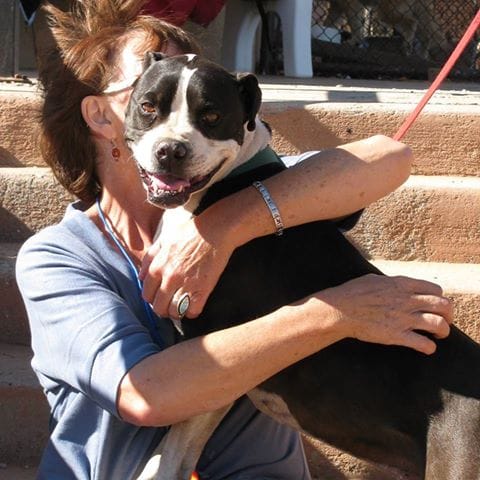 Most dogs have happy and healthy homes and their humans love them, treat them with kindness and consider them their best of friends. But there are many cases where dogs don't have a home and may end up in a shelter, are strays or are being abused by their owners.. These are the dogs most in need of help in your community, and for them just doing a little can mean a lot. Consider Adoption The best thing you can do for a dog is to adopt it. While that won't work for everyone, there is no doubt that adopting a dog and giving it a permanent home can't be beaten. But consider this. You may not be able to adopt a dog because of your situation, where you live, your work schedule, or other issues, but do you know of someone who might? A friend or family member, a friend of a friend, an acquaintance that may want or need a companion, and all it may take is an idea with a phone call to get the ball rolling and potentially make a very happy occasion for a dog and its new owner. Volunteer Sure, nothing beats adopting a dog, but every pet shelter needs volunteers to help manage their dog population. And this doesn't have to be a full-time project, either. You could go in for an hour a day, or every other day, once per week and clean kennels. You could go in and walk the dogs, you could help during feeding time, you can help giving medications, and there are myriad other ways to be involved as a volunteer. Just doing something like that may make the difference in a dog that is happy to see you, and will then show that love to any prospective owner who is looking to adopt.  Be A Sponsor If you don't have time to volunteer, consider being a sponsor. Sponsoring means you'll provide a particular dog with food, medicine or special needs for as long as it stays in a shelter. Even though you may not be directly involved with your dog, being a sponsor gives it a chance to thrive and be taken care of until a potential owner shows up. Doing that might make all the difference in the world. Foster care A better way to be a sponsor is to actually foster care a dog until a permanent home is found. It will live with you until such time as an owner is found, and in that way, it won't take up space at a shelter where the space might be needed more. You may be able to do this for only a limited amount of time, like say during a holiday when you'll be at home, or on vacation from work. Even doing that frees up space and acclimates a dog to a human setting, which can only be a positive thing for being permanently adopted down the road. Volunteer Other Skills Sure, we touched on volunteering your pet skills, but how about skills that are not pet related? A shelter may need maintenance or minor repair work, and by doing that, you'll allow them to spend more money on the care of the dogs. Although it is an indirect way of volunteering, it serves the same purpose and can be just as satisfying no matter what. Keep Your Eyes and Ears Open Stray dogs can pop up anywhere, and they need to be off the streets and in a shelter where they can be helped. If you see a dog roaming the streets without any apparent ownership, call your local Humane Society or shelter and let them know. Trust me, you'll be doing that stray dog a favor by doing so. Also, and everyone hates to admit this, but there are some bad dog owners out there. Any dog that is restrained out in the open in all types of weather needs help. A call to the Humane Society or shelter will get a someone out to the property where the dog is, and the situation can then be ascertained by a professional. It's Up To You No one wants to see a dog abused, penned up in a shelter or stuck in a kennel. By doing any one of the things listed, you can make a difference for the dogs in your community, and it just may be the best feel good thing you've ever done, for you and a dog. About the Author Mary Nielsen is a passionate dog lover, blogger, and part-time music teacher. She founded MySweetPuppy.net to share her ups and downs of being a pet parent to a bunch of adorable mutts. When she is not playing with them or teaching, you can find her experimenting in the kitchen. (images courtesy of Mindi Price, Delores Francois and Becky Lyn Tegze)
I am a firm believer that all homeless pets deserve to be treated like someone's beloved pet who is just lost or as victims of circumstance and our poor choices. While this may make sense to most people, there are some people who presume that shelter animals are in shelters for a reason, as if they somehow deserve their fate. I just don't agree at all. Animals are not capable of malice. It's just not how they function. Yes, there are some animals who have cognitive issues just like some people do, but when lives are on the line, we cannot afford to confuse circumstances with fault. Animal shelters across the country are becoming increasingly progressive in order to keep up with our culture. The days of catch and kill are slowly coming to an end as more and more communities realize that we save animals while still insuring public safety and spending our money wisely. Even the best of shelters, however, can be a stressful environment for any animal. Many are very empathic. Most can see, smell and hear things we do not. This means that for them, a shelter is a very strange and scary place and is nothing like home. Even the most balanced of animals will not behave in a shelter the way he or she behaves outside of a shelter. This makes it very difficult to identify behavioral issues and to even determine which animals are social and well-adjusted. So. How to we help them? We get them out.
Shelter animals in foster care are animals who are being prepared for a new life. Some are perfectly healthy. Some may have some special needs. When we put animals in homes, even for short periods of time, we learn about how they function and we help them get ready to be someone's pet. Their past will never be known but their present becomes very much known. Can he walk on a leash? Is she house trained? Does riding in a car upset her? Does he love to play with toys? How about getting along with children or other pets? All of these questions can be answered more accurately once animals are outside of a shelter environment. The great news is that most communities have an incredible number of resources which could become foster homes. Retirees. Soldiers. Students. There are people who may not want the long-term commitment of a pet but who are great with pets. All of these people are excellent candidates to provide foster care. Do you not have a pet because you think you are too old? Foster. Do you not have a pet because you want the freedom to travel a lot? You can foster. Do you want to help a deployed troop so he does not have to surrender his beloved dog to the shelter? Fostering that dog means he can stay local and be returned to his owner when the deployment ends. Do you want to help neonatal puppies or kittens who need regular bottle feeding for a few weeks until they can eat solid food? Yep. You can foster. In support of the concept of fostering, I have launched a Bonfire shirt drive to help offset veterinary costs for homeless animals in my area. If you'd like to do something to help homeless animals and get a nice shirt or hoodie in the process, please stop by my drive page. I made the design patriotic to satisfy the veteran in me. I hope it will appeal to all animal lovers who advocate for those who cannot speak for themselves. |
AuthorI am an animal welfare advocate. My goal is to help people understand some basic issues related to companion animals in America. Awareness leads to education leads to action leads to change. Archives
July 2024
Categories
All
image courtesy of Terrah Johnson
|

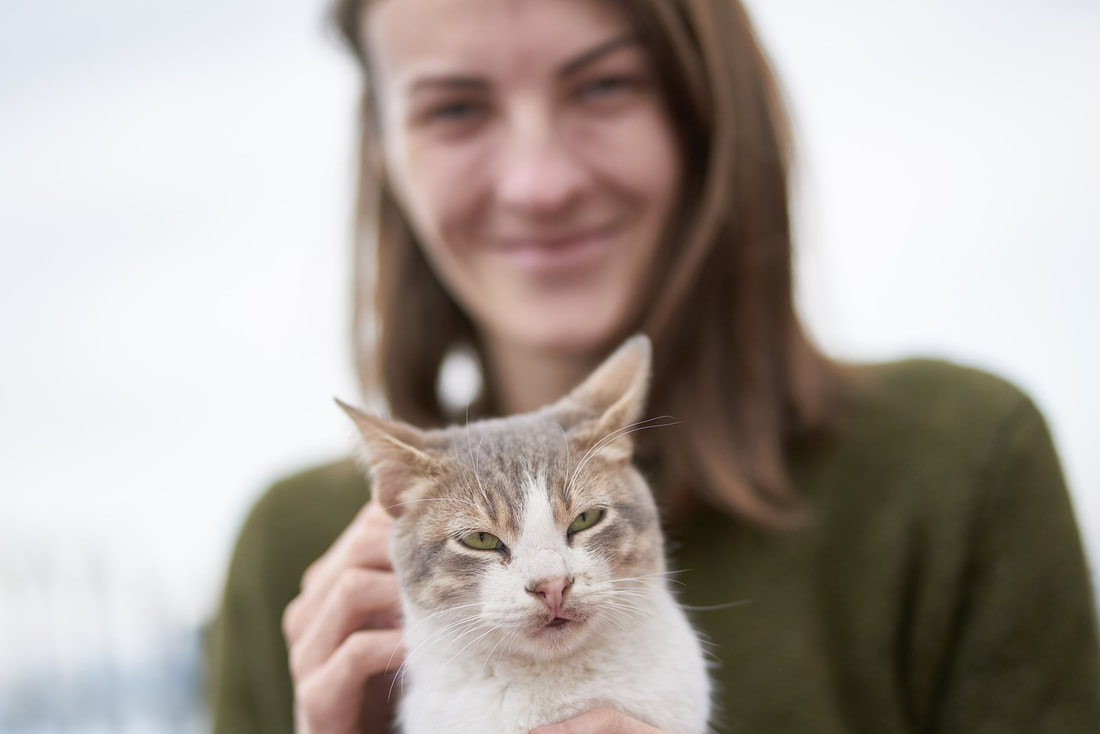
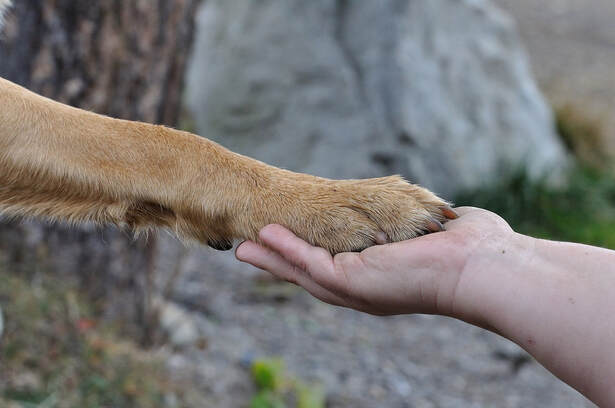
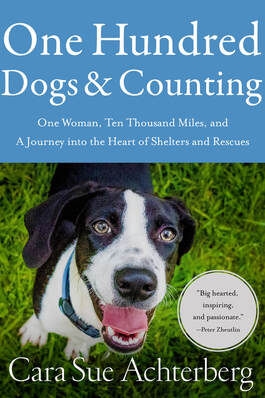


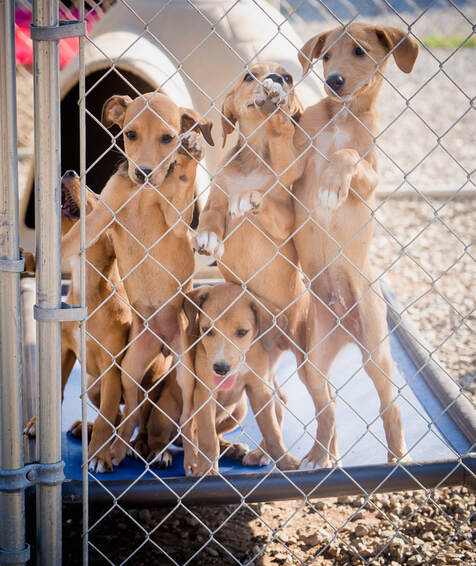

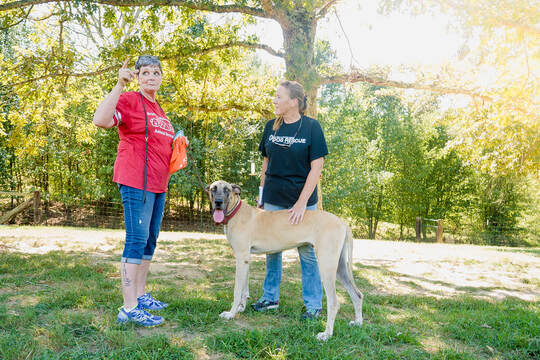


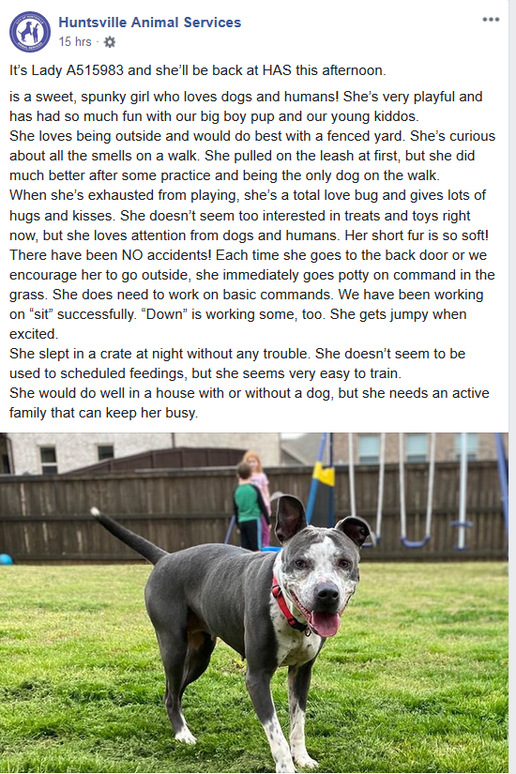

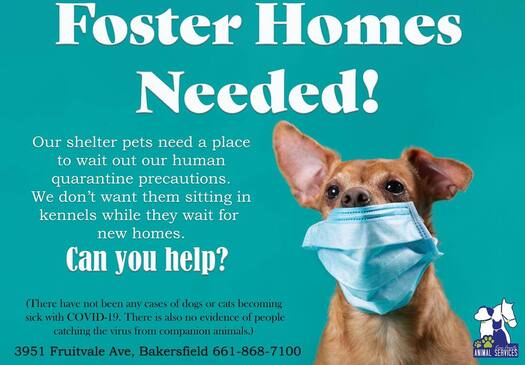
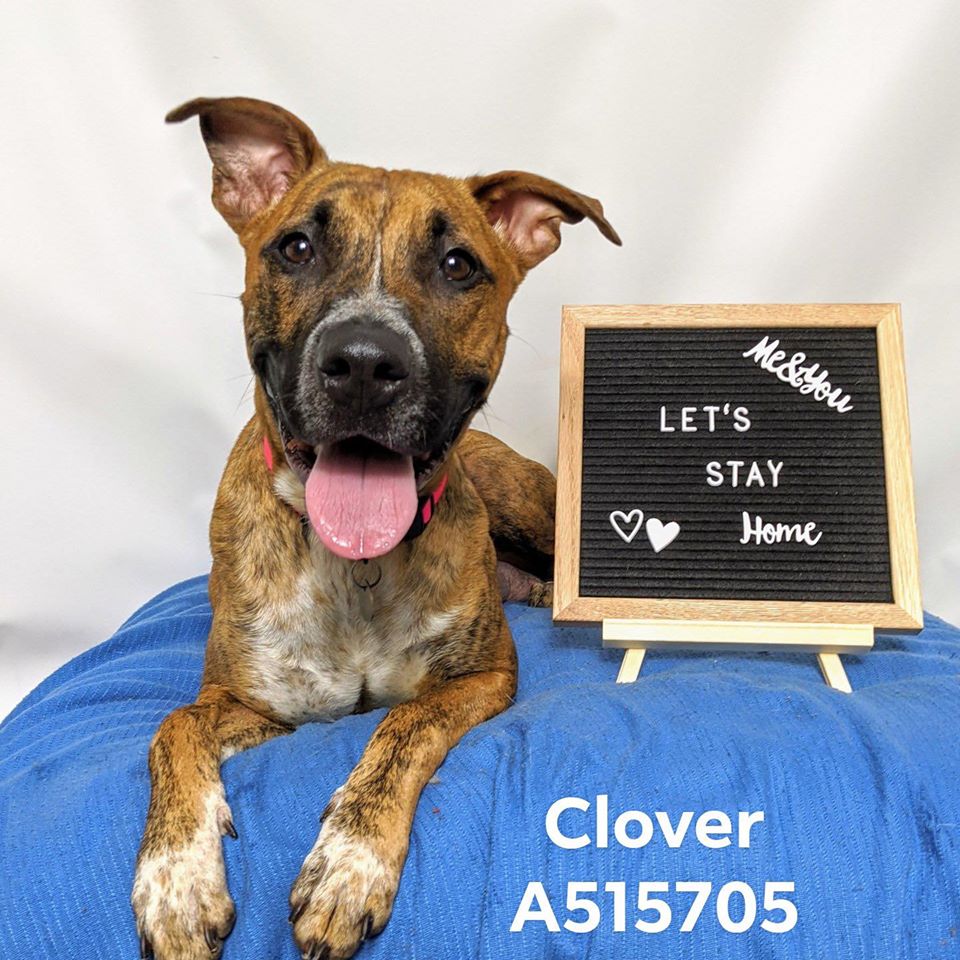

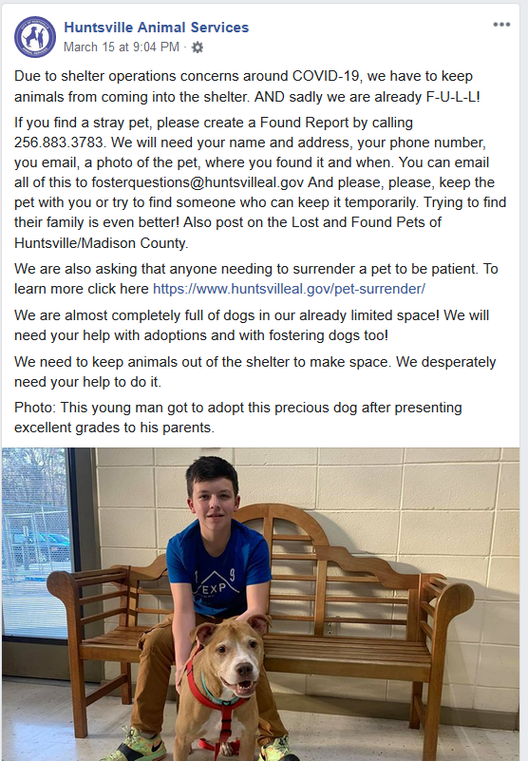


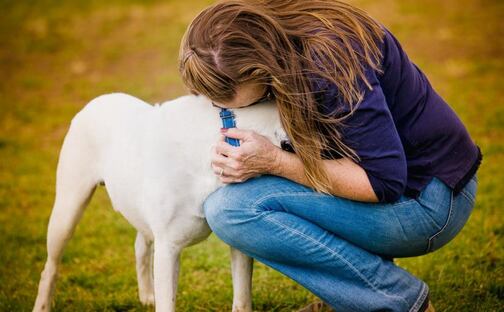

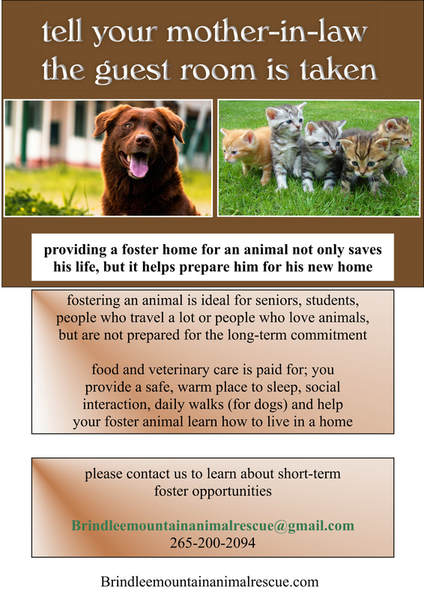

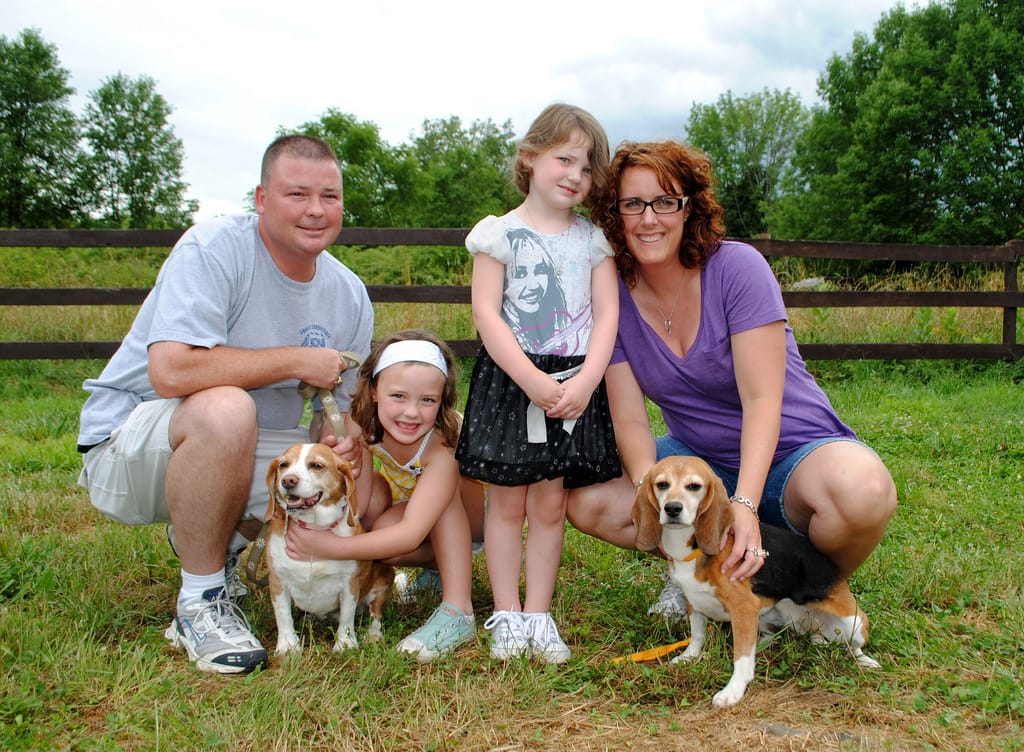
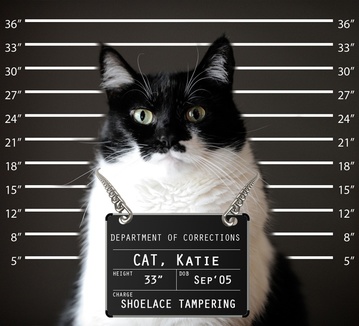

 RSS Feed
RSS Feed